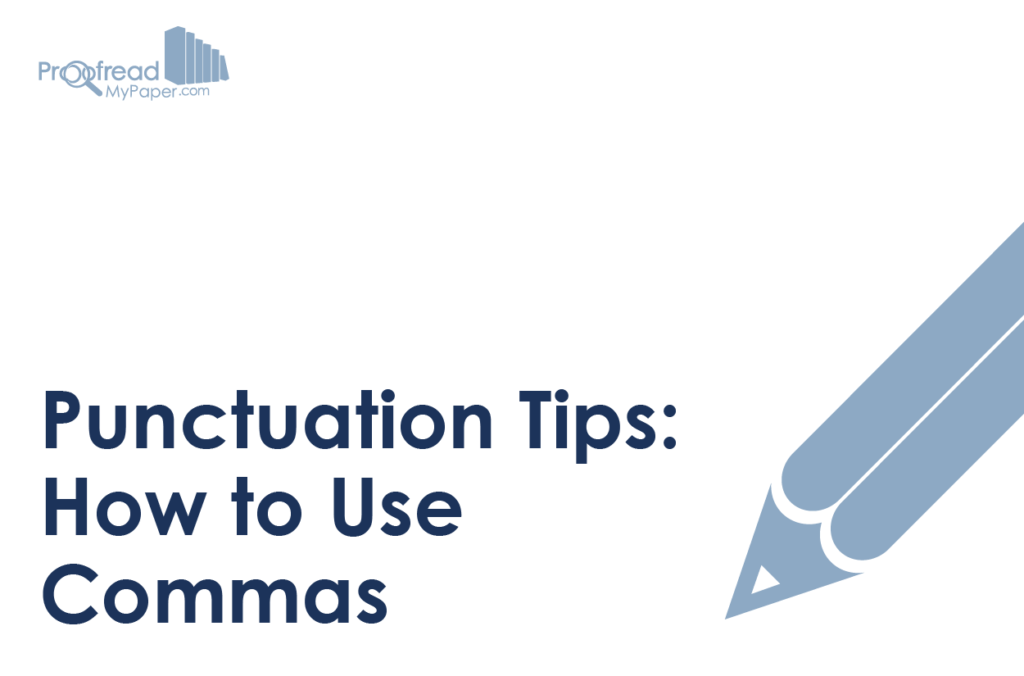For such a common punctuation mark, commas cause a lot of confusion. But there are some rules for how commas should be used.
These rules aren’t rigid: It’s a matter of style to some degree, and the important thing is that your writing is clear and easy to read. However, if you use commas along the following lines, you’ll be on the right track!
1. Commas in Lists
One important use of commas is to separate items in a list of three or more things. US English typically uses a serial comma before the final item:
My favorite bands are Toto, ELO, and REO Speedwagon.
In British English, however, the serial comma is often omitted.
2. After Introductory Words or Clauses
A comma should be used to separate introductory words or phrases from the main clause in a sentence. These tend to be terms or phrases that modify or frame the sentence:
As a solo artist, Kenny Loggins is best known for the song “Footloose.”
(Image: Surian Soosay/flickr)
3. After a Coordinating Conjunction
When joining two independent clauses with a coordinating conjunction (i.e., “and,” “but,” “for,” “nor,” “or,” “so,” or “yet”), they should be separated with a comma:
I have every Boz Scaggs album, but I don’t have any albums by the Steve Miller Band.
This only applies when linking clauses that could work as sentences by themselves, though, not whenever a coordinating conjunction is used.
4. Parenthetical Commas
Parenthetical commas set apart non-essential information in a sentence. This often occurs mid-sentence:
Daryl Hall, best known as one half of Hall & Oates, has released several solo albums.
But parenthetical information can also come at the end of a sentence:
“Rickrolling” is named after Rick Astley, whose song “Never Gonna Give You Up” was a number one hit in 25 countries.
5. Setting Apart a Contrast
When adding a contrast at the end of a sentence, set it apart with a comma:
The Eagles played classic rock, not heavy metal.
(Photo: Rachel Kramer/wikimedia)
6. Separating Coordinate Adjectives
When using multiple adjectives to modify a single noun, you should separate coordinate adjectives with commas. Commas aren’t required when adjectives aren’t coordinate.
Coordinate adjectives are equally-weighted in how they modify a noun. You can test whether adjectives are coordinate by either changing their order or adding “and” between them:
Find this useful?
Subscribe to our newsletter and get writing tips from our editors straight to your inbox.
Pat Benatar is a talented, successful musician.
Pat Benatar is a successful, talented musician.
Pat Benatar is a successful and talented musician.
These all sound okay because “successful” and “talented” are coordinate adjectives.
If we do the same thing with adjectives that aren’t coordinate (e.g., “successful” and “American”), the sentences sound wrong:
Pat Benatar is a successful American musician. – Correct
Pat Benatar is an American successful musician. – Incorrect
Pat Benatar is a successful and American musician. – Incorrect
This is because “American” is more important to the identity of the noun in this sentence.
7. Introducing a Quotation
A comma is used to introduce a quotation when it follows from the rest of a sentence, particularly after terms like “said” or “wrote”:
Jon Bon Jovi said, “Success is falling nine times and getting up ten.”
However, no comma is needed when the quote follows the word “that”:
Jon Bon Jovi said that “Success is falling nine times and getting up ten.”
(Photo: Artur Bogdanski/wikimedia)
8. Direct Address
Finally, when something is directly addressed to someone else, we separate the name of the addressee from the main statement with a comma:
Before: Derek, are you listening to Def Leppard?
After: Are you listening to Def Leppard, Derek?
This particularly applies when writing dialogue, so it’s relevant when writing fiction.
